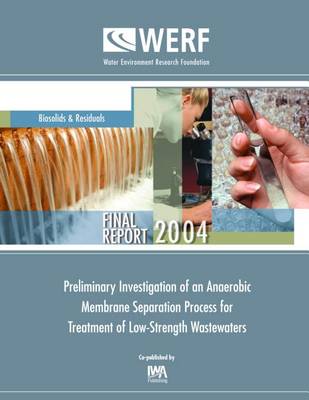As a result of an evaluation of biomass reduction technologies, anaerobic treatment was found to have potential for the lowest level of biomass production in the treatment of municipal and industrial wastewaters. A limitation of anaerobic wastewater treatment processes for dilute wastewaters and at cold temperatures is the ability to maintain a significant level of methanogenic organisms in the reactor to sustain efficient treatment. A process consisting of an anaerobic baffled reactor followed by membrane separation was proposed for the treatment of low strength wastewaters at colder temperatures. A 4 gpm pilot plant facility was assembled and installed at the West Point wastewater treatment plant in Seattle, to test the feasibility of the anaerobic/membrane separation treatment system. During a 7 month period, 3 different attempts were made for system start up with the result of little methanogenic activity in the anaerobic baffled reactor system. The temperatures during the start up ranged from 10 to 15?C and may have been a significant factor in the inability to generate a significant methanogenic population within the time available. Another aspect of this continuing study to investigate biomass reduction was a cost analysis to evaluate the potential for an anaerobic/membrane process for biomass reduction. The cost analysis showed that the significant capital expenditure for adding a membrane reactor to retrofit an existing secondary treatment system resulted in a greater annual amortization costs than the significant operational cost savings realized by less sludge production, less aeration hp, and excess methane gas production. Because the membrane separation system represented about 90% of the retrofit costs, the cost analysis suggests that a less expensive method be pursued for liquid solids separation after anaerobic treatment of low strength wastewaters. This publication can be purchased and downloaded via Pay Per View on Water Intelligence Online - click on the Pay Per View icon below
- ISBN10 1843397293
- ISBN13 9781843397298
- Publish Date 1 January 2005
- Publish Status Active
- Publish Country GB
- Imprint IWA Publishing
- Format eBook
- Pages 33
- Language English
